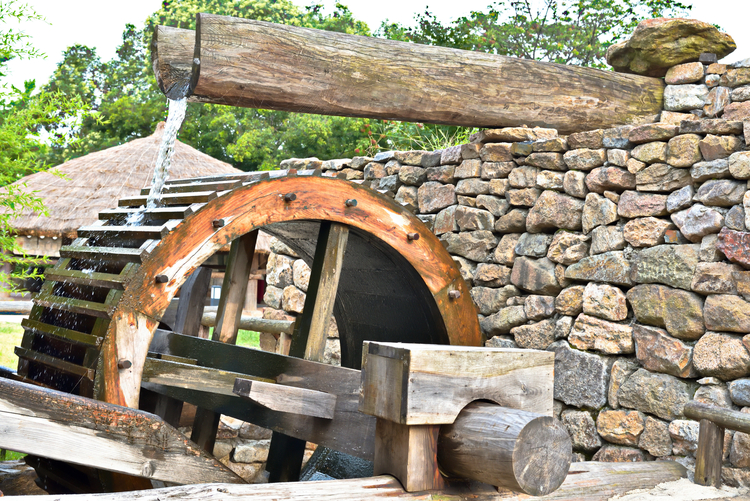
Science Fair Experiment: Create Hydropower Energy
Before it was common to flip a switch to power machines, people used the energy found in water and wind to get big jobs done. This type of energy, called hydropower, is referred to as renewable energy because there is an endless supply – it never runs out.
Renewable energy is important when teaching kids about travel and world cultures because the sites of many cities were originally chosen for their access to water power. In fact, some of the earliest examples of water wheels date back to 31 BC. Otherwise known as hydropower, this energy made it possible for people to build and create with assistance from natural resources. Today, the world’s largest water wheel is located on the Isle of Man in the Irish Sea.
Students in grades 4–6 can create their own hydro-powered water wheel for the science fair with a few simple materials.
Materials
- Ruler
- Scissors
- Craft knife
- Duct tape
- Single-serving smooth plastic bottle
- Four corks
- Wooden skewer
- Paper clips or other bendable wire
- Small objects of varying weights to lift
Instructions
- Cut the top and the bottom off of the plastic bottle, leaving a ring that is six centimeters tall.
- Cut the ring into four equal strips.
- Use the craft knife to cut four slits in one cork equal distances apart.
- Slide a plastic strip into each slit. Make sure all strips curve the same way.
- Cut the wooden skewer in half and create the wheel’s axle by poking one end of each piece of skewer into each side of the cork.
- Straighten two paperclips or use bendable wire to create support for the axle. Put one end of each piece of wire into a new cork. Bend small loops into the other end of the paper clips to hold the axle.
- Stand the two corks upright and insert the axle into the wire loops.
- Push the last cork into the end of the skewer/axle.
- Tie thread around the middle of the cork at the end of the axle. Leave enough thread tail to tie test objects.
- Choose an area that can get wet, like a bathtub, sink or outside space, and set up the water wheel.
- Use a pitcher or watering can to pour a small stream of water onto the plastic strips/blades of the water wheel. This will cause the wheel to spin.
- Experiment with tying different objects to the lifting thread.
Record Your Observations
While your children are testing their water wheel, ask these questions:
- How does hydropower move objects?
- What makes water wheel speeds increase and decrease?
- Will the speed and power change if you add or take away some of the plastic strips?
- How much weight can your water wheel move?
Renewable energy is an important topic in today’s science classes because there are many benefits to using it instead of fossil fuels. This experiment encourages discussion of other important questions, like “How does solar power work?” and “What is a wind farm?” Encourage children to explore new ways that solar power is being used, for example, on top of office buildings or on roads. Learn more about countries that obtain most of their power from renewable energy and talk about the pros and cons of this choice.
Expand the lesson by visiting local renewable energy resources. There are still a variety of water wheels – working and not – on display around the country, and children can see solar panels and windmills in action nationwide.
